Age old traditions of Wadiyar dynasty you will be surprised to hear exists to date
Some cultures and traditions are followed over centuries together, passed on from generation to generation that exists to date. The Wadiyar dynasty were the kings of Mysore who ruled the kingdom from the late 1300s until 1950. Some of the traditions they must have followed in the past must seem obsolete today. However, that is not the case!
On the third day of my all-India cycle touring journey, I happened to cross the village of Maralahally accidentally. A huge house traditionally built with an antique vibe to it appealed to me. Perceiving the opportunity to request a stay for the night, I entered the place to be well greeted by one Mr Gurushanth Aradhya.
Mr Gurushanth was quick to understand the sort of journey I was heading out on and offered to host me for the night.
What started as a colloquial talk on backward classes and reservations turned out to reveal quite a bit about Mr Gurushanth. The heritage and legacy he carries on his shoulders. It turned out that Mr Gurushanth is a local priest in the village and so were his ancestors before him. The house I entered had a rich background to it and so did the people in it.
The house was a temple (Matha) of sorts. As I sat there discussing with Gurushanth sir, I saw a newly-wed woman enter their house, pray to God, seek blessing from Gurushanth sir, and leave.
Only by probing further did I get to understand the rich heritage the place shared and the connection of the place with the Wadiyar dynasty.
Table of Contents
ToggleWadiyar dynasty’s winning battle
Back in the 13th century when the Hoysala empire ruled many parts of Karnataka, the Vijayanagara empire was expanding. When the Wadiyar (king) of the Vijayanagara dynasty was on his way to wage a war against the Hoysalas at Srirangapattana, he was going over the T Narasiputa road where he happened to see a house filled with people.
Upon inspection, the king figured that the house was a Matha (temple) with a Mathapathi residing in it. So the king happened to pray there to God and promise God that he would go to the Matha each year to receive Prasad if he wins the war.
Soon after winning the war, Wadiyar sent his men to the house to write a contract on both sides of the copper plate, describing how Prasad has to be collected each year during the final week of Karthik Masa (November end) to celebrate the victory of the battle against the Hoysala kingdom.
This house where I happened to hitch a stay was the very house that was the matha holding such a rich history.
On requesting Mr Gurushanth if I could look at the copper plate, he called over his Nephew, Mr Ankush who took me on a tour of the house describing to me how the house has been reconstructed and renovated over the ages. It was an absolute privilege.
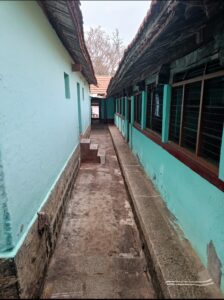

Ankush got me a book published in 1979 which held the information of the then-held war and also the copper plate with it. It seemed as though history was right there in my hands for a couple of minutes.
Does the Wadiyar dynasty continue to follow such traditions?
I asked Mr Gurushanth if king Srikantadatta Narasimharaja Wodeyar continues to follow the age-old tradition of coming to the Matha and collecting the prasad. I was just being sarcastic as I asked that question. Gurushanth sir replied saying the king does not come anymore but requests them to go to the palace at Mysore and hand them the prasad. That came in as a real surprise!
The tradition has been taking place since the 13th century non-stop and continues to be!
Gurushanth sir explained that Mahashivaratri which comes in the final week of February, is an auspicious date for the Aradhya family.
They (a couple of family members) start on a journey on foot (Pada yatre) from their house, all the way to Mallikarjuna temple, Srisailam, located in Andra Pradesh. It is a total distance of 550+ Km which takes over a month to be reached on foot. It takes exactly around a month which will be the mark of Ugadi (The new year for many South Indians).
The Prasad is collected there and the family members return on foot again which takes another month time.
The Prasad is held in the Matha in front of God’s idol until November end and handed to the king in the palace.
Too much tradition for one family to continue for 700+ years on a trot!
What is the mindset of these people who continue to follow the traditions?
Realizing that I got lucky to have gotten to stay at a house filled with a rich heritage, I took the opportunity to question Mr Gurushanth and learn from him.
I had a list of questions for him which would help me understand how the mindset could be of a man who follows traditions religiously. I waited until the night before dinner, where I posed the questions and received satisfactory answers.
Justifications
I asked Gurushanth sir why he continues to follow these age-old traditions as they are. It is a hassle to follow them and looked more like a burden to me. I wanted to know if he was so deeply invested because of his personal interests.
Gurushanth sir replied saying he followed all the traditions more out of fear. His ancestors before him must have laid them out for a reason. Just because he doesn’t understand them doesn’t mean there isn’t any meaning to them.
If some unnecessary incidents take place in his life when he decides to not follow the traditions, he says he is the sort of person who would worry thinking that breaking his customs led to the mishap.
It was clear. Gurushanth sir was satisfying his own mind. It was not a cultural or community-related thing. It was more personal.
Validations
I asked him if he hangs around with people and if he has any choice of who he likes hanging around with. Sir replied saying mostly people come to his house in the evenings and converse for a while. They find it a good place to catch up and talk on a general note.
I wanted to know why he wanted to indulge in conversations to which he replied saying he was curious to learn. He wanted to know how the lives of others are. His reason to stay with the group was with the intention of learning more than anything.
Complaints
I asked Gurushanth sir, what his biggest complaints in life were. He seemed to think for some time after which he couldn’t come up with anything. He said he is an extremely satisfied soul that way. Materialism didn’t seem to appeal much to him either.
Materialism
I asked sir what he would do with the money if I handed it to him. He said if it is a small amount, he would use it to buy flowers for God, maybe even feed his bus charges, and buy food with it. But when I raised the stakes to a large sum, he just denied answering.
He said he doesn’t want to dream about what may not happen. There was no way in his life that he was going to earn more than 5 lakh rupees and so he wasn’t willing to think about it.
He said to me that I may perhaps consider him a little person because he doesn’t aim for much. But he was happy with what he had.
Overall it was a huge privilege to stay over at Gurushanth sir’s house for the night as I pitched my tent right outside his house.
We discussed for long after that. Every minute spent was valuable. I was treated well by his wife and nephews. Had tasty food even packed for me. The culture ‘athithi devo bhava’ was written all around them.
To know Gurushanth sir’s opinions on backwards-class people and the society’s idea of casteism, read the following article.
To support me on my journey, kindly head over to the homepage and subscribe to my newsletters.
I am a 31 year young PhD graduate who has decided to travel the length and breadth of India on my cycle, to document the journey of meeting a vast array of people. In my journey, I intend to understand the characteristic features of the people of this nation and categorize them based on their demographics, age, profession, gender, traditions, and cultural differences.

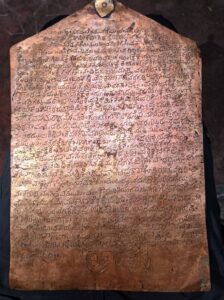
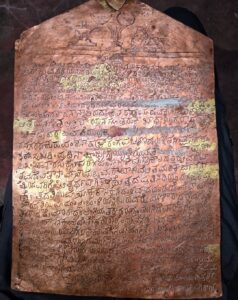
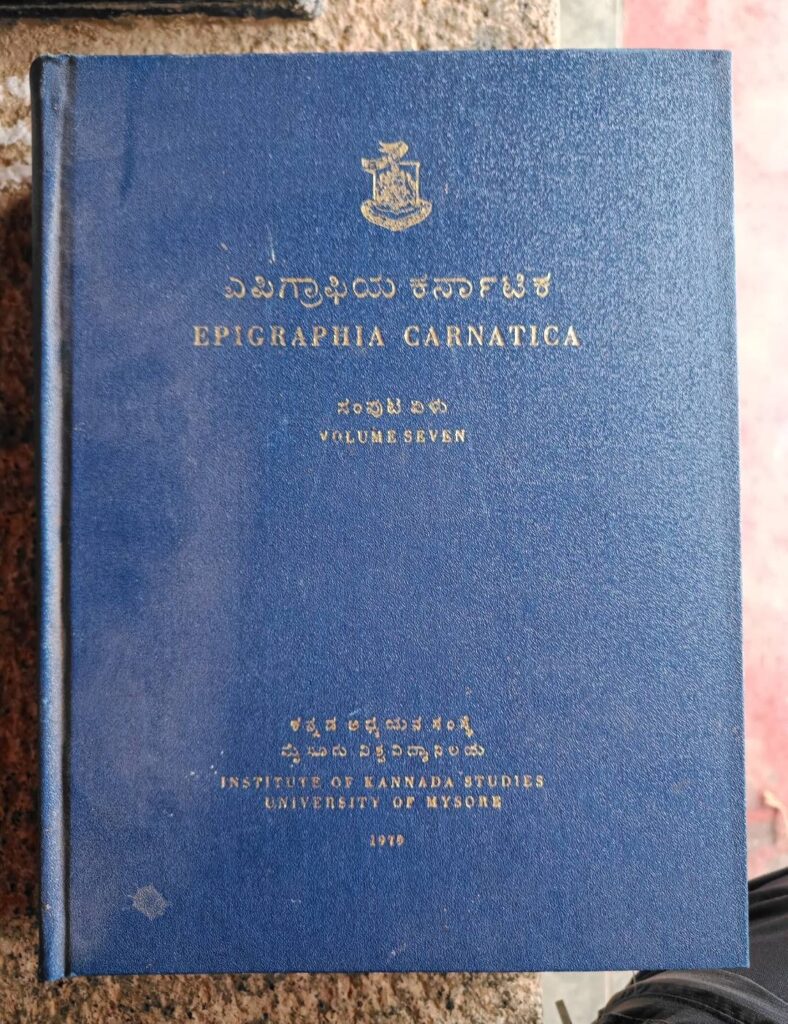
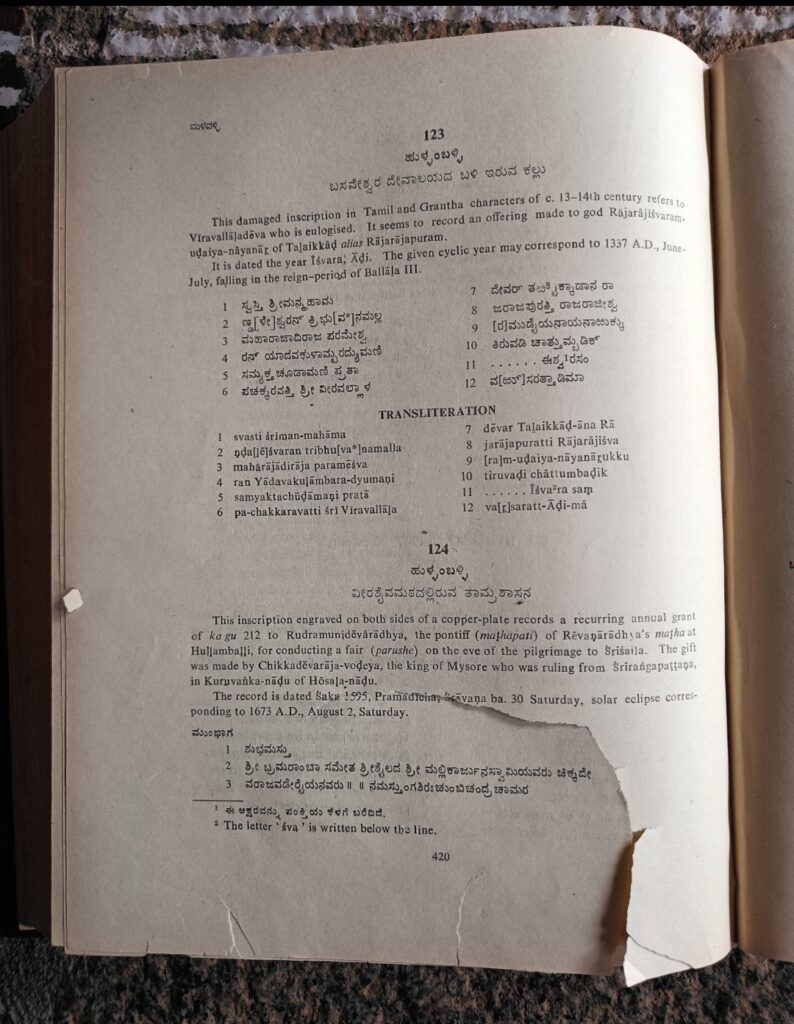

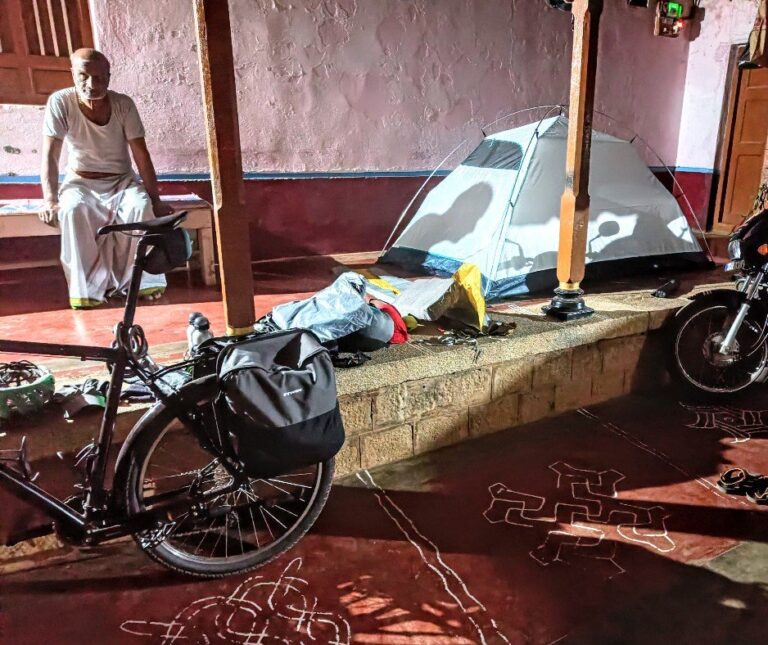
I am not there physically with you. But I feel like I am sitting there and listening to these wonderful people. Thanks for giving me this privilege.